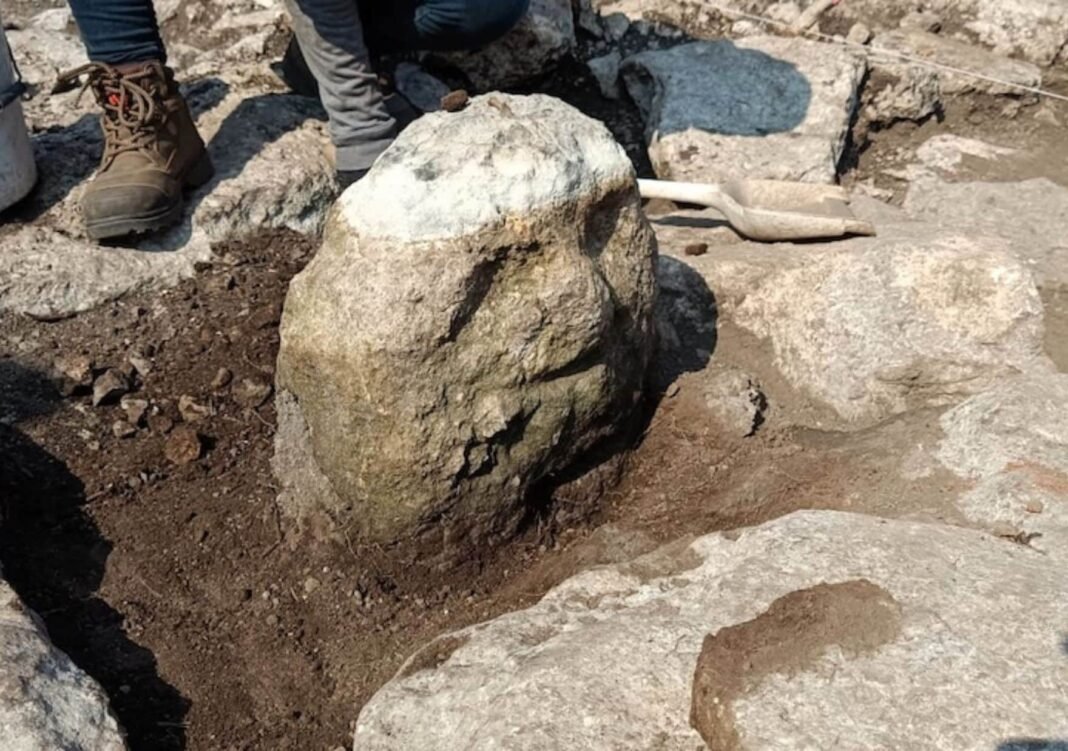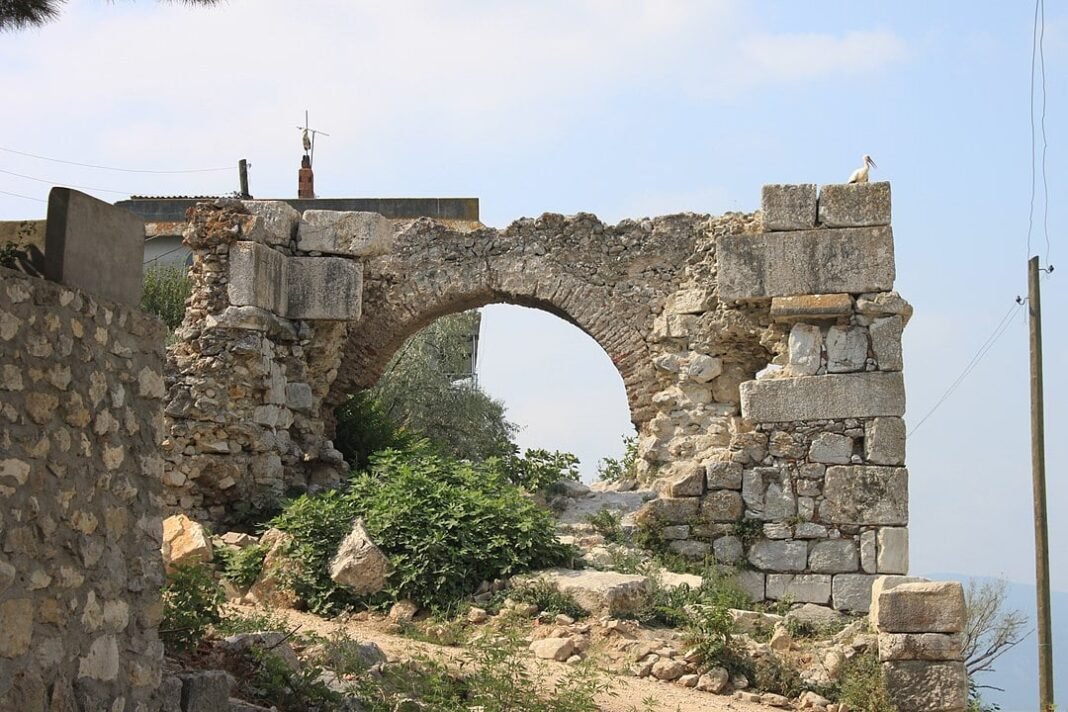
Archaeologists in Yucatan have uncovered a mysterious limestone sculpture that once stood guard at the entrance to what appears to have been an elite Maya gathering. The find was made in the ejido of Sierra Papacal as part of an archaeological salvage project tied to the Mérida–Progreso railway bypass, a section of the Tren Maya freight infrastructure.
Specialists from Mexico’s National Institute of Anthropology and History (INAH) discovered during excavations along the railway route. The carved limestone face features deep eye sockets, a flat nose, and a mouth marked by a groove that highlights the chin.
Researchers say the image likely represents an “elderly lord” and may have symbolized a guardian marking access to a restricted or ceremonial area.
Carved marker found within an ancient structure
The limestone sculpture, approximately 0.45 meters (1.47 feet) tall, was discovered attached to the northern foundation of an oval-shaped structure constructed with perishable materials. The building measures approximately 5.8 meters (19 feet) in length, 4.3 meters (14 feet) in width, and 0.6 meters (2 feet) in height.
Its base includes a double wall made of finely dressed limestone blocks about one meter (3.3 feet) thick. The piece will be moved to a conservation lab for cleaning and study.
Design shows connection to light and ritual
The compound’s entrance is located on the west side, a position likely chosen to capture sunlight. The doorway, 0.8 meters (2.6 feet) wide, is framed by two large stones serving as jambs. Inside, the chamber extends about three meters (10 feet) north to south and 2.5 meters (8 feet) east to west.

The thick wall suggests the presence of an interior bench, where the sculpture was found behind the north jamb, slightly emerging from the wall.
Structure dates to the early Preclassic Maya period
Experts date the sculpture to the Preclassic period (between 1000 B.C. and 200 A.D.). Its deliberate placement indicates it was not decorative but a symbolic marker for a sacred or gathering space. Archaeologists say the compound’s design and orientation suggest it served ritual or social purposes rather than domestic ones.
Excavation reveals multiple construction phases
Excavations have uncovered several stages of construction and occupation. Ceramic fragments found nearby indicate that the site evolved over centuries, beginning in the Preclassic era.
The earliest phase likely featured a 13-meter-long (43 feet) platform aligned north to south, where traces of charcoal suggest a hearth. This platform corresponds to the foundation that held the carved sculpture.
Expanding understanding of ancient Maya spaces
The excavation is taking place along the right side of the railway, where at least 15 structures have been identified. The site is less than two kilometers (1.2 miles) from the Papacal 1 and San Francisco 1 sites, both recorded under the Costa Maya project.
The current work is led by archaeologists Manuel Pérez Rivas, Susana Echeverría Castillo, Wendy Lorena Pérez Mezquita, and David Alejandro Ferman Valor.
The research will continue with ethnographic and comparative studies on similar markers found in ceremonial spaces, such as effigy censers from Postclassic temples (900–1521 A.D.). According to INAH, the find provides early evidence of communal and ritual spaces where people gathered for worship or decision-making, offering new insight into the social and spiritual life of early Maya civilization.


